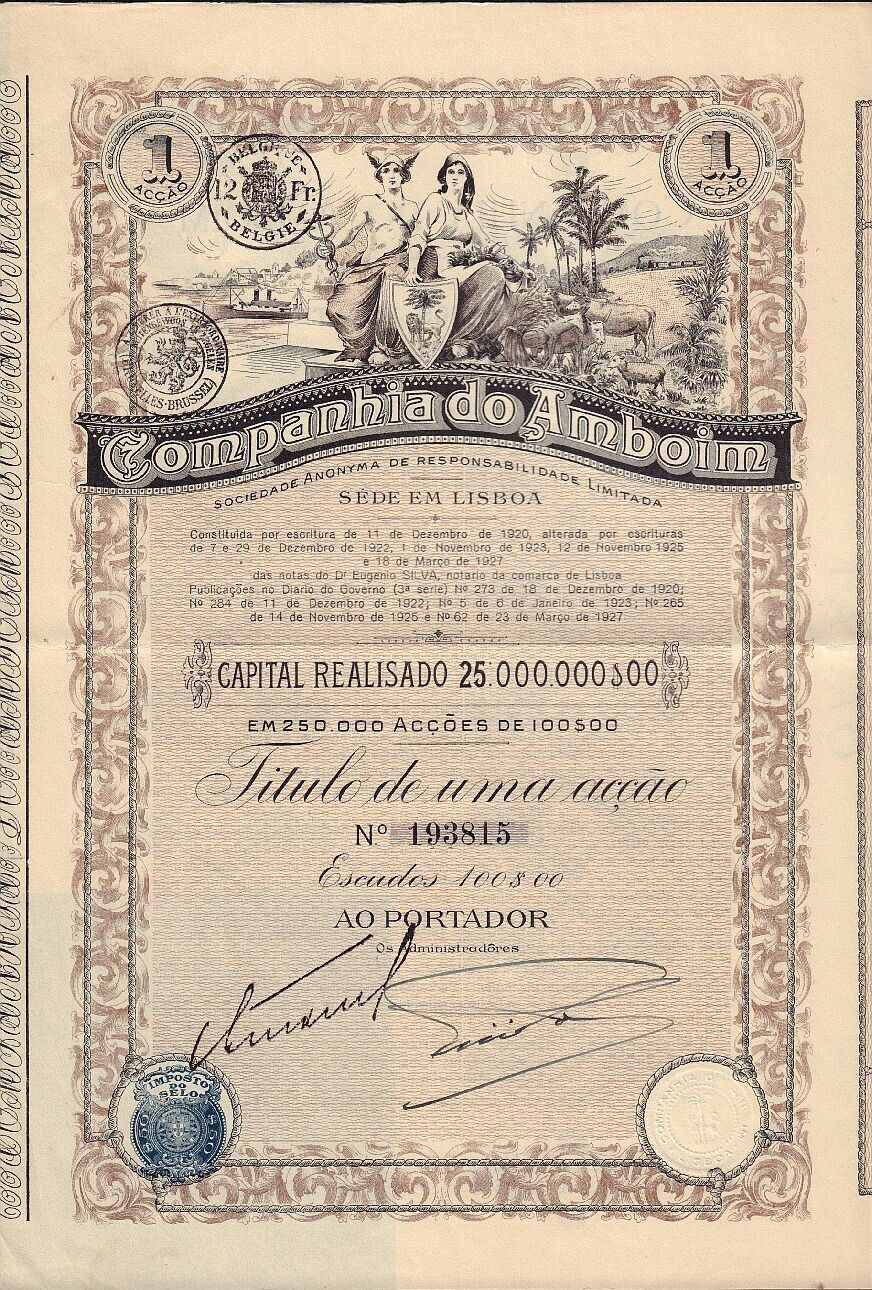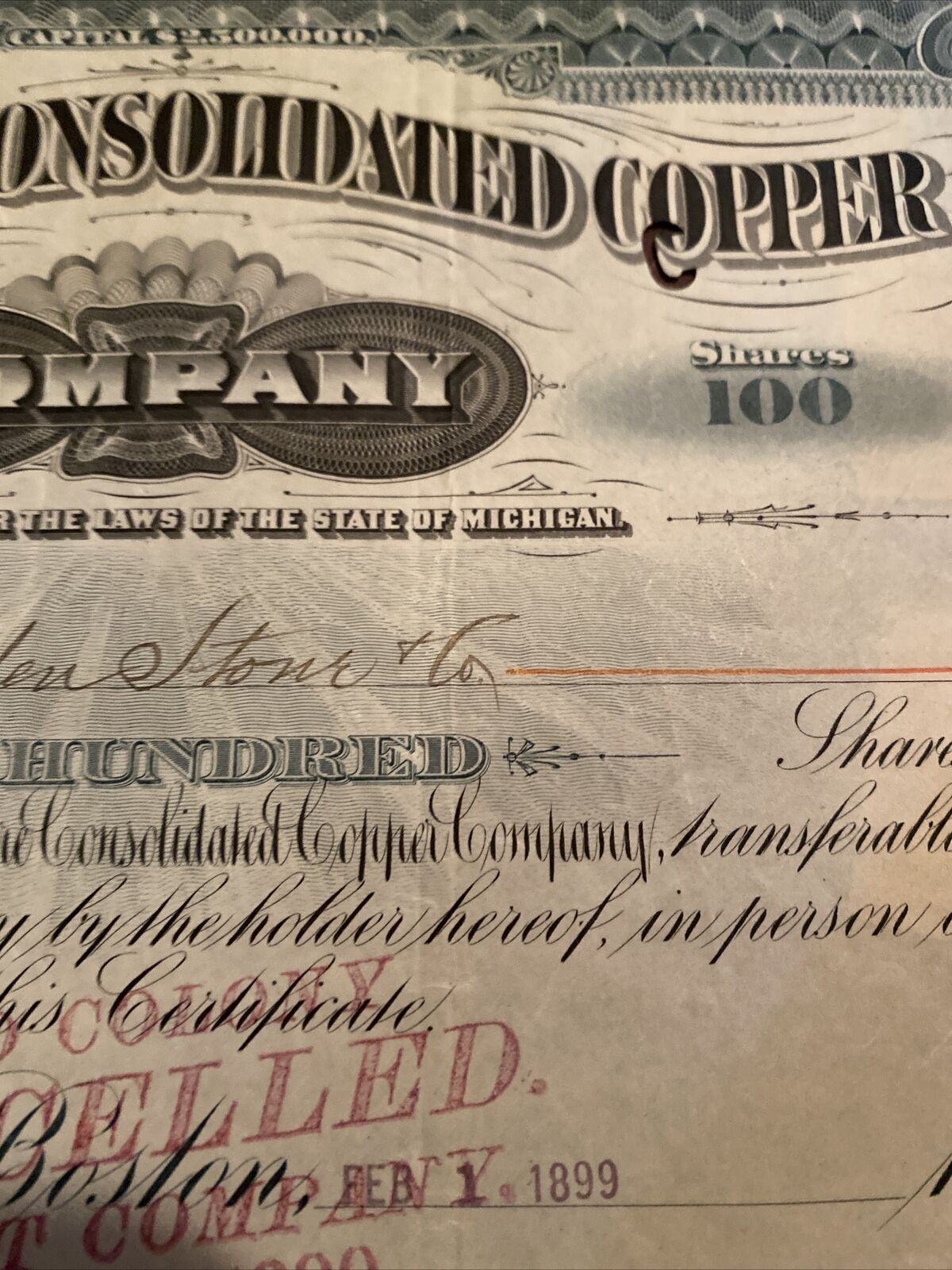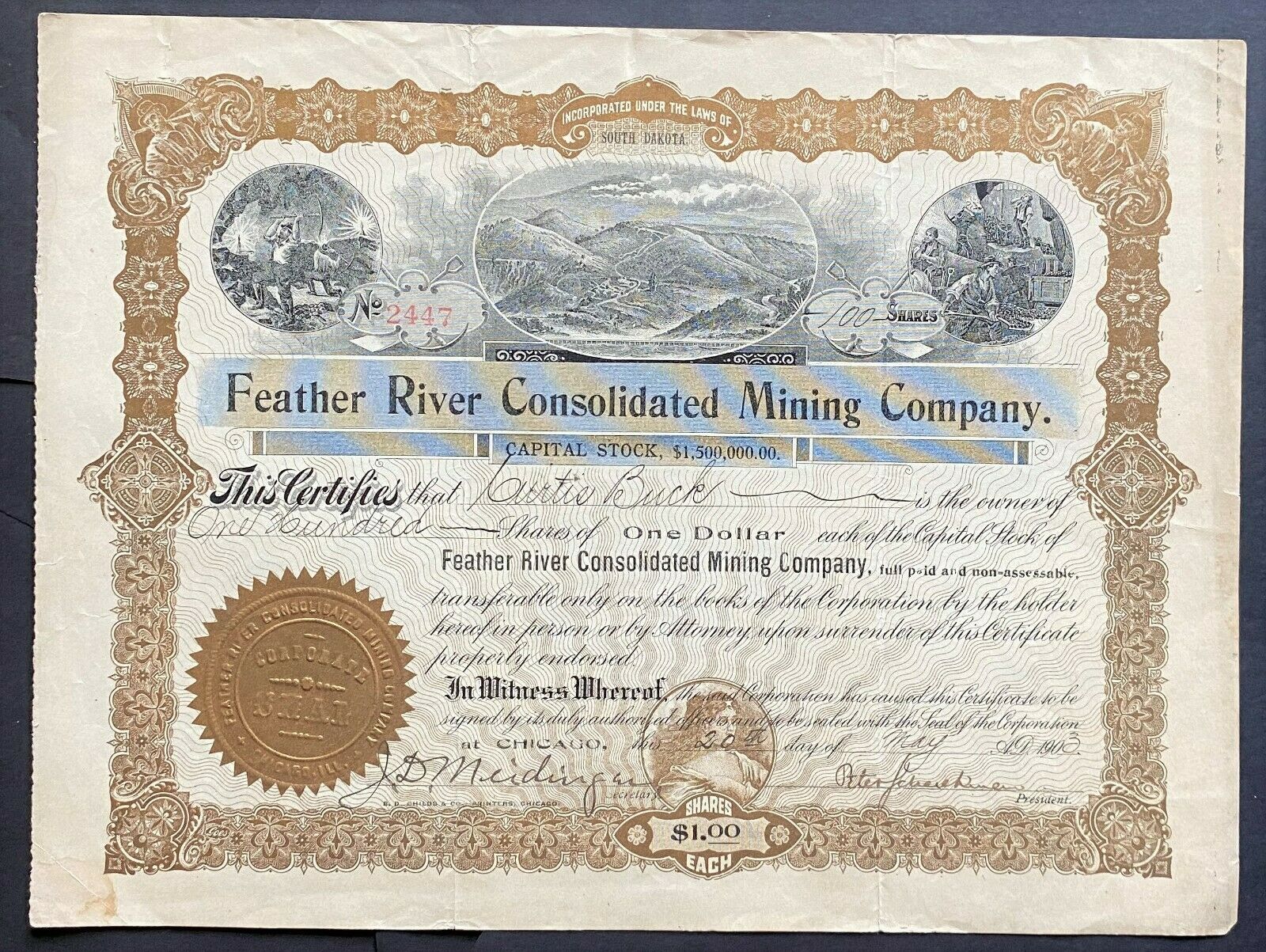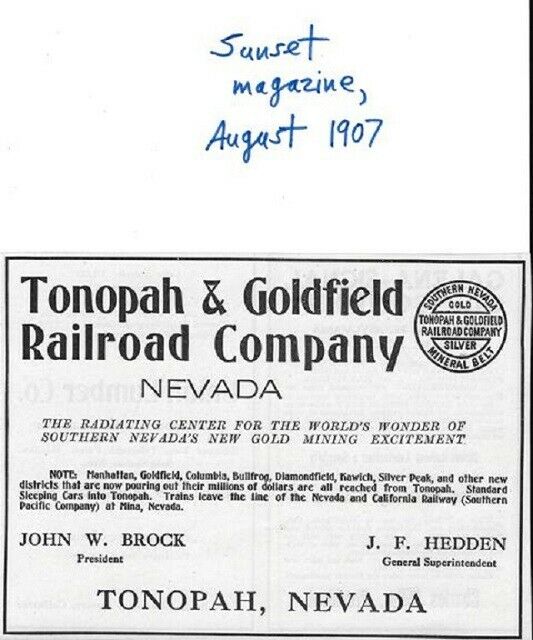-40%
Utah Copper Company Stock Certificate
$ 1.58
- Description
- Size Guide
Description
Product DetailsIntricately engraved antique stock certificate from the Utah Copper Company dating back to the 1910''s. This document, which is signed by the company Vice President and Assistant Treasurer, was printed by the American Bank Note Company and measures approximately 10 3/4" (w) by 7" (h).
Images
The images presented are representative of the piece(s) you will receive. When representative images are presented for one of our offerings, you will receive a certificate in similar condition as the one pictured; however dating, denomination, certificate number and issuance details may vary.
Historical Context
Utah Copper Company had its start when Enos Andrew Wall realized the potential of in Bingham Canyon, 15 miles southwest of in 1887. He acquired claims to the land and started underground . In the mid-1890s, metallurgist Daniel C. Jackling and mining engineer Robert C. Gemmell inspected the property and liked the prospects. Both men examined Wall's properties and recommended open-pit mining. In 1898, Samuel Newhouse and Thomas Weir formed the Boston Consolidated Mining Company.
Jackling and Wall formed the Utah Copper Company on June 4, 1903, with Charles L. Tutt Sr., Charles MacNeill, Spencer Penrose, Boies Penrose, Tal Penrose, and Dr. R.A.F. Penrose as investors. MacNeill was named president, Spencer "Speck" Penrose was named secretary-treasurer, and Jackling was named general manager. The company immediately started a pilot mill at Copperton.
With financing from Guggenheim Exploration, the first digging began in 1906. The same year, the Kennecott Mines Company was formed in , named after explorer and naturalist Robert Kennicott. A smelter was also started at Garfield, by the (ASARCO) to refine the Bingham Canyon ore.
In 1907, the Utah Copper mill in Magna started operation. Utah Copper and Boston Consolidated merged in 1910. Five years later in 1915, Kennecott acquired a 25% interest in the company. In 1915, to dilute the cost of construction to support the mines, and to find new ventures for the capital produced by the Alaskan mine, was incorporated from the various financial interests involved. By this time, the Guggenheim Exploration was already actively working copper mines in Chile and Utah. Upon Kennecott's creation, they merged their Braden Copper Company property in Chile, as well as 25 percent of the Utah Copper Company, into Kennecott.
These actions resulted in Kennecott taking possession of Braden's El Teniente, the world's largest underground copper mine, located in the Chilean Andes. Founded by William Braden and E.W. Nash of , the Braden Copper Company had started mining there in 1906.
In Utah, the Bingham and Garfield Railway opened in 1911 to transport local ore, replacing the 's line. In 1936, Kennecott acquired all the assets of the Utah Copper Company.










